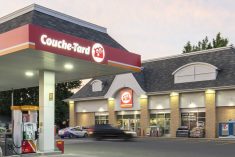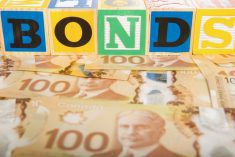This is the third installment of my series on comparative company analysis. For this column, I’m looking at two “hot” tech companies, Amazon (AMZN) and Shopify (SHOP) and contrasting them with an old school Canadian industrial company Linamar (LNR), which has an agricultural connection through the ownership of MacDon.
My analysis was done in late March based on 2021 year-end results. Market action since then enhances the illustration. By way of disclosure, my wife or I own some Amazon and Linamar, but not Shopify (which we consider a poster child example of speculative excess).
I studied Shopify to see if its decline from $2,100 to under $900 moved it towards representing value and concluded it was not. Looking at traditional metrics SHOP looks decent with a price/earnings (P/E) of 30.6, costing $30.60 per dollar of annual earnings, better than AMZN’s $51.70. It also had very strong return on equity (ROE) and return on assets (ROA) numbers. Only the price to sales (P/S) ratio looked out of line.
Read Also

Gentle treatments for pain in the neck
Heading toward year-end, people unknowingly tense up against the cold and busyness, causing neck pain that can often be treated with appropriate support and gentle mobility, athletic therapist Kathlyn Hossack says.
Turning to cash flow, a very different picture emerges. SHOP costs $177.10 per dollar of operating cash flow, whereas AMZN costs $37.20. We can also see that SHOP only derives $2.40 of cash flow from every dollar of assets, which is very low. We’ll cut it a little slack being a relatively new startup but that’s still awfully expensive. AMZN derives $12.80 of cash flow from each dollar of assets. Not great but acceptable. AMZN has been on a warehouse building spree, increasing CAPEX and eliminating its usual free cash flow. Whether these investments pay off is yet to be determined but it has a good track record.

What caused the dramatic difference in SHOP’s earnings versus cash flow? I didn’t dig too deep, but it turns out SHOP had an unusual gain from investments that affected profitability but not cash flow. Unusual items are usually negative but in this case they were positive.
From a growth perspective, both SHOP and AMZN are strong with AMZN growing cash flow by 9.8 times over the past decade. SHOP doesn’t yet have a 10-year history. I would not have purchased either AMZN or SHOP at these levels and if I owned SHOP, I would have sold it.
The story was that SHOP would become the next Amazon. Whenever a stock is touted as “the next ____,” tread carefully. Stock promoters use the line regularly but it’s rarely true. SHOP illustrates another problem with startups. If they turn the corner and start making money as SHOP has done, investors transition from looking at the story to looking at the numbers, often leading to a share price drop. SHOP, however, deserves some credit in becoming a startup survivor.
Let’s now contrast these examples with a traditional industrial company to see how distorted valuations became. LNR is an automobile parts and industrial company. Who needs them anymore? We can buy a dollar of annual earnings for just $7.80 and a dollar of annual cash flow for just $3.20, which is less than one-tenth the cost of AMZN and one-fiftieth the cost of SHOP. In other words, SHOP is fifty times more expensive. LNR derives $16.00 of cash flow from every dollar of assets and has grown cash flow by 3.3 times over the past decade, both very good. I doubled my LNR position.
From the time of doing my analysis to the time of writing in early June, SHOP is down a further 50 per cent, while AMZN is down 34 per cent and LNR is down just nine per cent. Looking back at the first article I wrote with real-life examples, Chevron, which I sold, is up three per cent. Exxon, which I purchased at the time and was my second pick, is up 12.5 per cent while my top pick, Suncor, is up 24.6 per cent. Both sets of examples illustrate that outside of speculative fervor, numbers count (pun intended).
Titanium-Strength Portfolio
We’ve passed the fourth anniversary of the Titanium-Strength Model Portfolio, set up to demonstrate the ease of making money with stocks. During this time, I have not sold any positions and I’ve reinvested dividends twice.
The portfolio lost a mere 2.6 per cent since the beginning of 2022, very admirable given the U.S market was down 15.6 per cent and the Canadian market was down 5.3 per cent over the same time frame. The portfolio now has a cumulative return of 48.8 per cent, pretty darned good for four years with no work!
There has been an unusual amount of volatility over these four years, with three U.S. bear markets. They usually occur about once a decade so having three in four years, albeit all have been mild ones, is highly unusual. We may not be done with the current one yet but keep in mind my stance on predictions.
My personal portfolios have also weathered the storms, being about break-even on the year. The main reason is that I invest rather than speculate. It’s important to understand the difference.
















